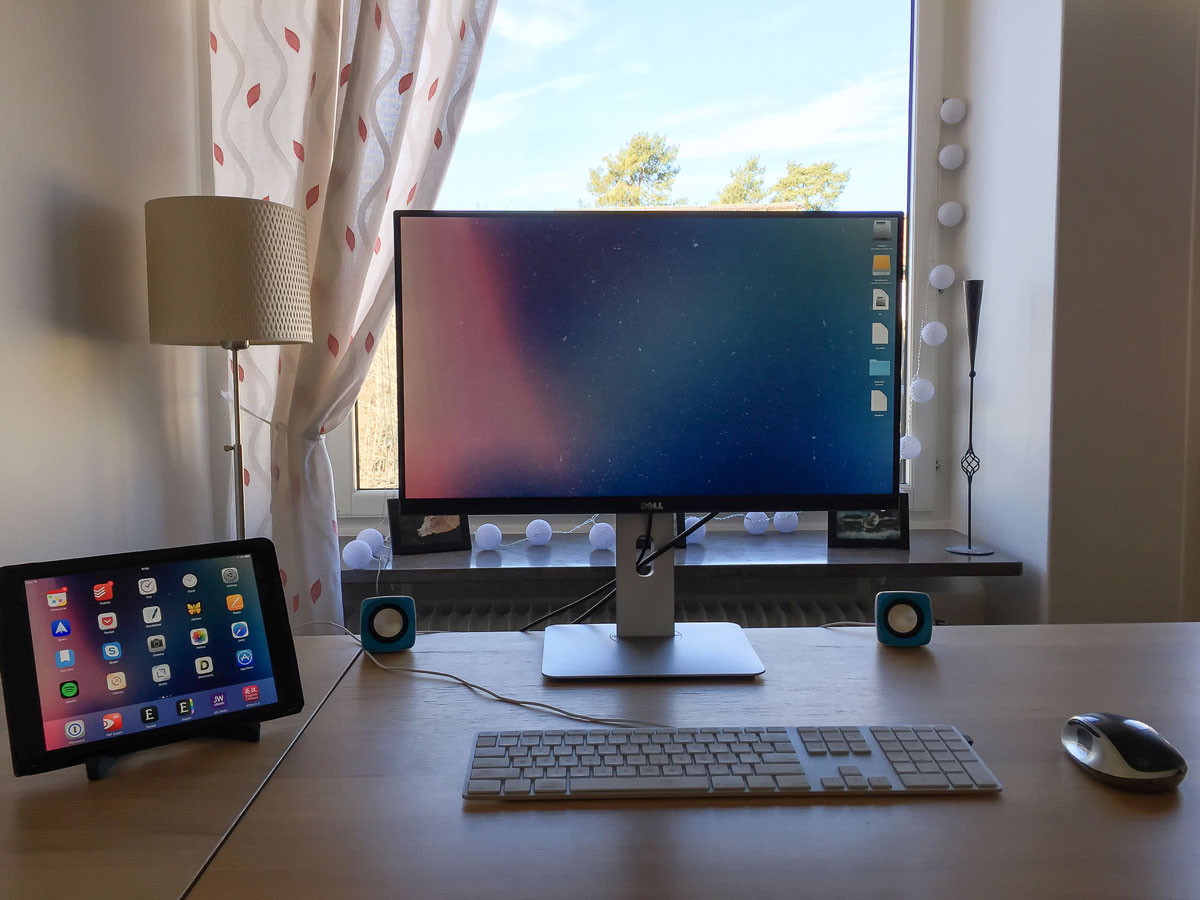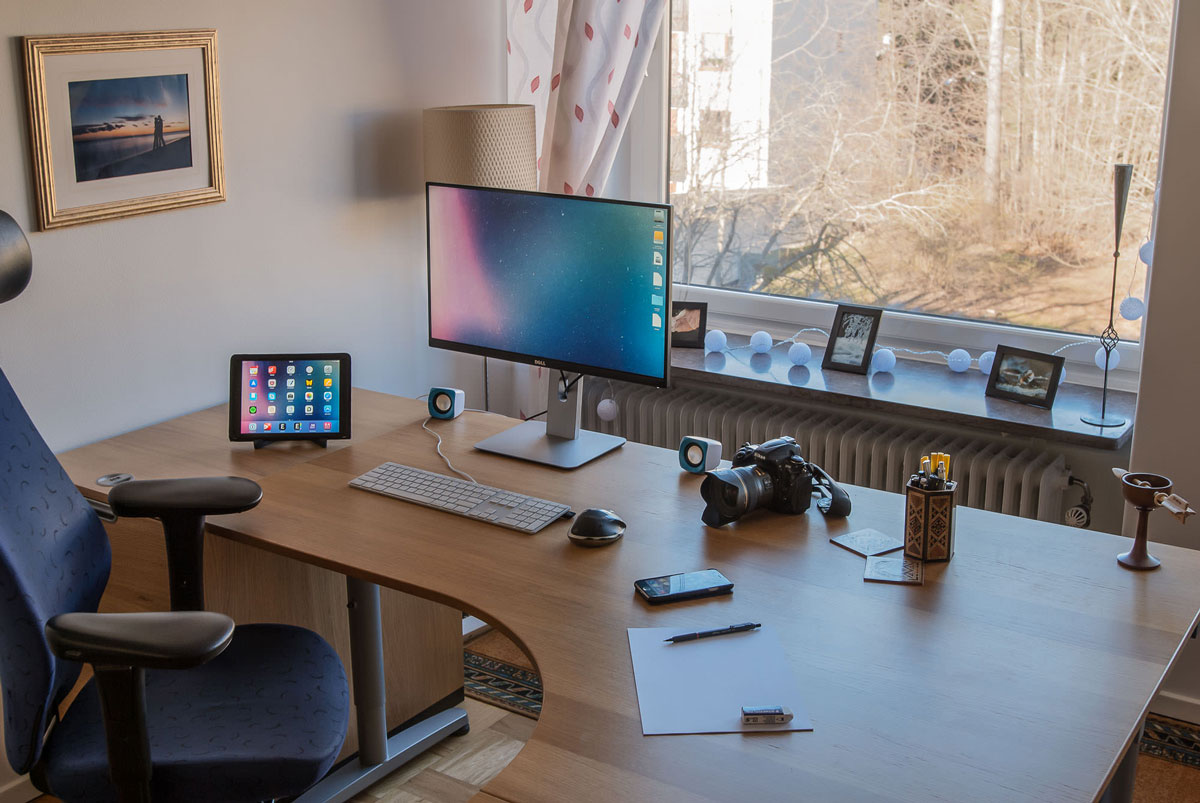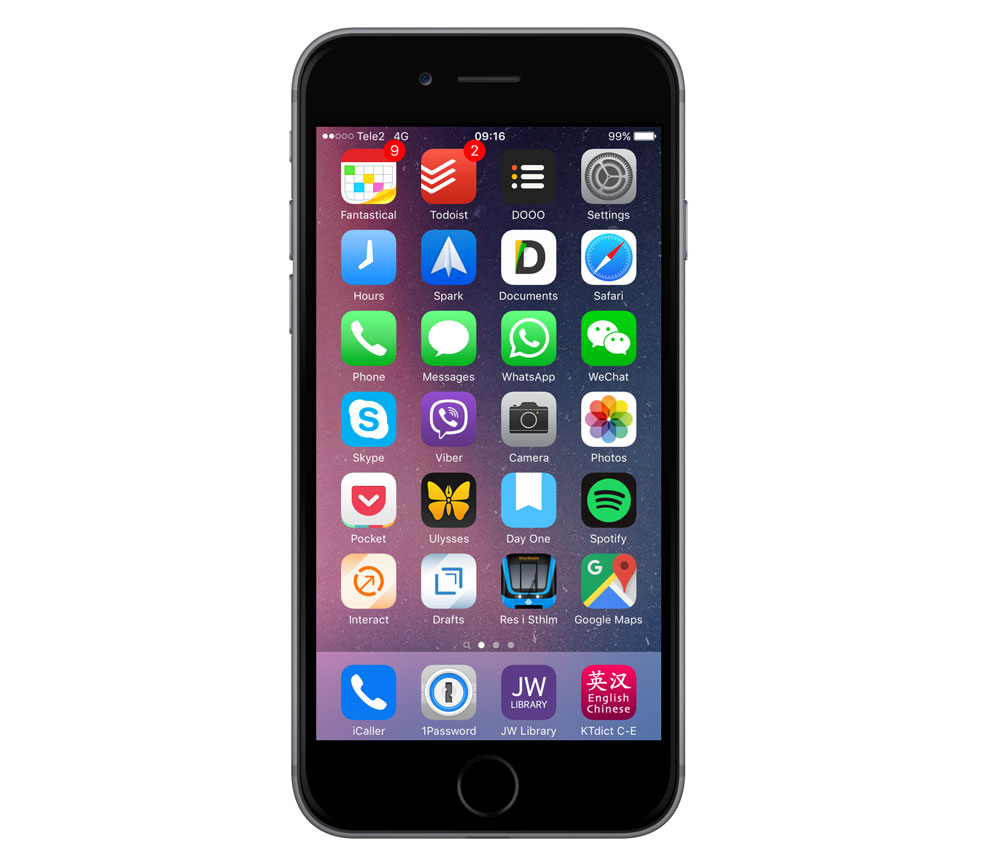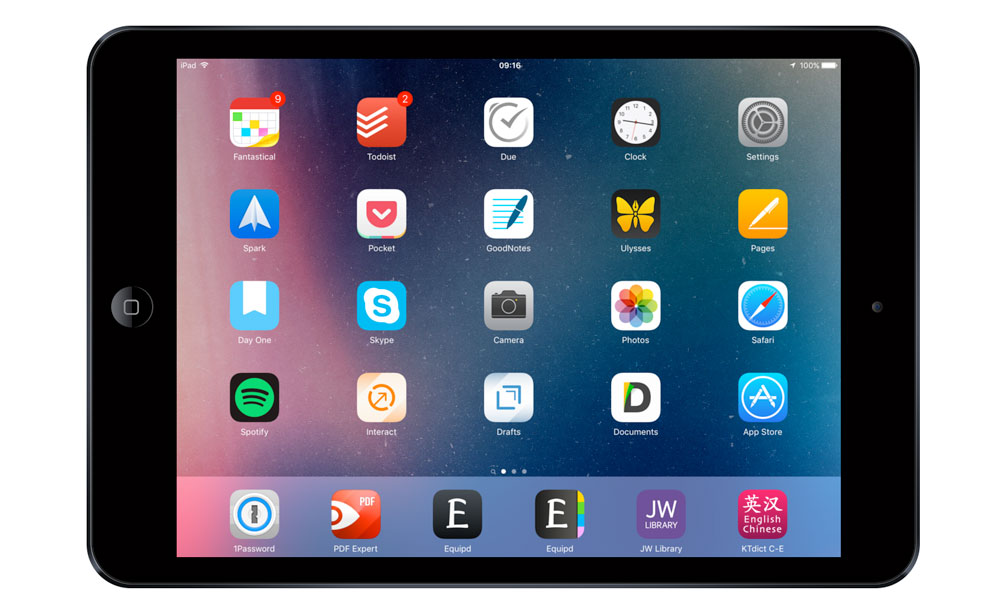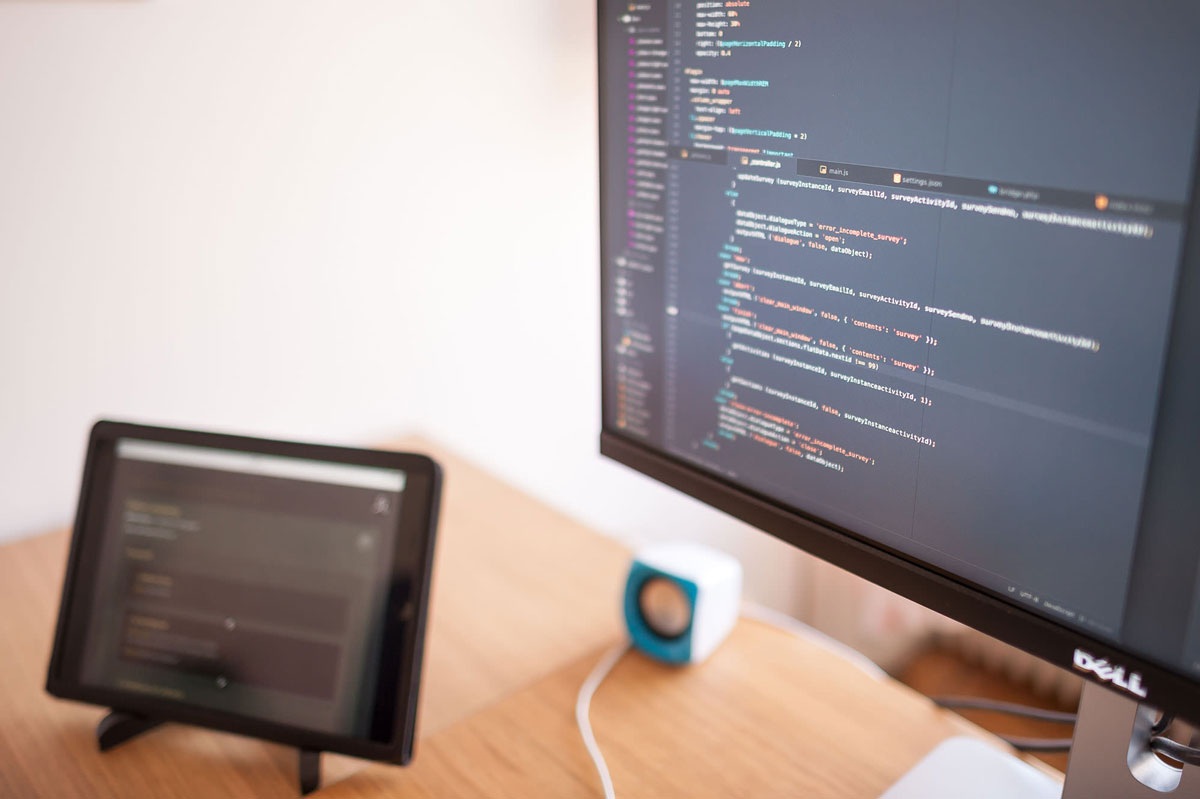Stefan Elf’s Mac and iOS setup
Every week we post a new interview with someone about what software they use on their Mac, iPhone, or iPad. We do these interviews because not only are they fun, but a glimpse into what tools someone uses and how they use those tools can spark our imagination and give us an idea or insight into how we can do things better.
New setup interviews are posted every Monday; follow us on RSS or Twitter to stay up to date.
Who are you and what do you do?
My name is Stefan Elf and I am from Sweden. In the last year, I have moved back from Beijing, China (where I was working as an English teacher) to Stockholm, Sweden. When I got back I restarted my web design agency after having lived abroad for several years. I am a passionate media and UI designer, programmer, lecturer, and photographer.
What is your current setup?
I’m still using my trusty mid-2011 Mac mini (base model, dual-core i5 2.3GHz) fitted with 8GB RAM and a 256GB SSD, both from Crucial. It’s beginning to show its age but I’m getting satisfaction from trimming it in and using it to its lean, clean potential! I pair it with a Dell Ultrasharp U2515H 25” monitor, which I’m very happy with.
I house the mini along with my all-in-one Epson printer/scanner and all my stationery in an IKEA Galant printer unit. Next to it is a large IKEA Galant corner desk which gives me both physical and mental space to work – and it matches the printer unit (I liked the combined workspace so much that I actually named my company “the Desk”). As a consequence of having the computer inside the printer unit, I’ve finally achieved a (practically) silent operating environment, which has been a long-term goal of mine. And it limits wire clutter.
Just a comment on my design workflow. I’ve been reading a lot about using Wacom tablets for digital design, but I have chosen to sketch and draw on paper (stock printing paper) with a pencil (rOtring rapid PRO 2.0). Once I’m happy with the design (e.g., a company logo), I fill it in with a thin marker (Sakura Micron) and scan it into Photoshop where I clean it up. From there, I go into Illustrator to vectorise the drawing and finalise the design. Then, I usually export it to SVG if it’s for the web. I like the sense of being actually hand-crafted that I get with this workflow!
For photography, I have a full set of Nikon SLR equipment (D700, D200, lenses, etc.), but I have also started using the iPhone camera more and more. In this area, I’ve become more pragmatic lately. Any device that lets me capture the scene – in the way I envision it – is fine by me!
Where can we find your OS X wallpaper?
It’s called ‘Rock Salt’ and can be downloaded from Merek Davis’ website here. I switch wallpapers every now and then and synchronise them across my OS X and iOS devices. I’ve given up on using normal photographs as wallpapers though. It just looks wrong when photographs are visually interrupted by desktop icons (OS X) or apps (iOS)! So I go for abstract wallpapers these days.
What software do you use and for what do you use it?
Notable software:
- Web development: MAMP, Codekit, Atom.io, FileZilla, and Tower.
- Graphics: Adobe CC (especially Lightroom, Photoshop, and Illustrator).
- Writing: Ulysses, Scrivener, nvAlt, and Pages.
- Document archive: Devonthink Pro.
- Task and calendar management: Fantastical and Todoist.
- Web browsing: Safari and Chrome.
- Email: Airmail.
- Read it later: Pocket.
- Utilities: Alfred, 1Password, Spectacle, Dropbox, and FormatMatch.
Many of the apps listed above have been covered very well before on The Sweet Setup, but I want to comment on some of them especially.
- Codekit: This is such a wonderful tool for web development! It makes it easy to simultaneously see changes made in the code across multiple browsers on multiple devices (through automatic reloads and CSS push). Responsive web design has never been easier, and it runs checks and compiles on all my JS and SASS code automatically in the background. I just have to remember to quit it while making big changes in Git, or its project folder configuration file will get corrupted.
- Atom.io: I’ve finally found a code editor that I can tweak to perfection. It’s been a long journey. The project management plugin is the last piece of the puzzle, though. Without it, life would be difficult again.
- Tower: I’m not too keen on managing Git through the command line. I guess I’m a visually-oriented person. Tower, with its gorgeous interface and integrated Git Flow support, ticks all the right boxes for me. It’s simple and fast, and the online courses provided by its developers (Fournova) can help anyone learn Git! Danke.
- Ulysses: This is one of my favourite pieces of software. Plain text and Markdown really is the new golden standard, and for long form writing, Ulysses represents the cleanest and most thought-through environment that I have come across. I love the themes support and the export templates, too. With the recent addition of Ulysses Mobile, the trifecta (OS X, iPad, iPhone) is complete and I couldn’t be happier. I wrote the first draft of each section of this interview in the respective version of Ulysses (Mac, iPad, iPhone) to celebrate the new release. As a side note, when working on the new the Desk website, which is going to be trilingual (Swedish, English and Chinese), I choose to use Ulysses for all editorial text. I hope to release the new website within the next month.
- DEVONthink Pro: For a long time I was weighing Evernote and DEVONthink against one another for organising my archived files, but then Evernote stopped working intermittently in China (let’s not go into a discussion about cloud services in China…), which meant the choice between the two was made for me. All in all, I’m very pleased with the AI and search capabilities in DEVONthink. However, I’m still waiting for a good (and properly encrypted) sync service with iOS. The way I work, I separate current and archived files. Current files sync via DropBox and iCloud. But for now, whenever I need access to an archived document, I have to use my desktop to open the DT archive. If anyone has suggestions for how to implement secure synchronisation of DT files, I’m all ears. The wait for an improved DEVONthink To Go (2.0) has been long and fruitless so far. Perhaps I’ll be forced to give Evernote another shot after all.
- Fantastical and Todoist: I’ve been using Fantastical for a long time now, but recently stopped using Things for task management. Instead, I started using Fantastical with its natural language parsing for all events and private reminders (iCloud calendars and reminders) and Todoist for all work-related reminders. This setup has worked very well. I feel that many self-employed people need a sharp delineation between work and private life. This is one way in which I draw that line.
- 1Password: I’m interested in encryption and passwords. In the past, I used to create different Diceware passwords for everything and simply memorise them all. But realistically, when I set up my business, I had to concede defeat. With all the online memberships there were simply too many passwords to remember. So I took the plunge and decided to trust 1Password. So far, it’s been very pleasant to use, but I still use Diceware passwords for some things. Like that one password needed to unlock the app.
When it comes to backups, I use a couple of external USB hard drives for Time Machine, and I have a physical off-site backup too…and Dropbox…and Amazon S3…and BitBucket as a sort-of backup for all my code. Backups is one area where a clearer strategy would help me.
How would your ideal setup look and function?
I have a simple rule: find the most suitable software tools and develop your workflows well first. Only after that will you see clearly what your hardware needs really are. I have optimised my setup as far as possible. At the moment, other than for video and extensive RAW photo editing, I’m able to avoid wasting time using my current equipment.
If I would upgrade, I would seriously consider finding a Mac that could fit inside that printer unit. I guess that rules out any Macbook or Macbook Pro… Oh well.
I am saving up to get proper hifi speakers for the desktop (looking at the KEF X300A speakers currently), and ideally I’d love a dual or triple QHD+ monitor setup and faster peripherals (currently limited by USB2 on the mini), but I’m doing fairly well for now.
What iPhone do you have?
Space Gray iPhone 6, 64GB. It lives in a Kavaj “Dallas” black leather case.
What apps do you use the most, and why?
- Safari: because I prefer its interface to every other mobile browser’s.
- Spark: I’ve been switching between Spark and the new Airmail app. I’d say they are pretty much on level pegging for now. Both apps allow me to quickly delete or move emails with swipes. That’s such a life-saver whenever the inbox fills up too quickly. But, Spark has read notifications, which I like.
- Drafts: short notes start here. The new widget rules. It’s that simple.
- Equipd: it’s great being able to view different translations and languages of a Bible verse or verses side by side (or stacked vertically, really).
- JW Library: a fully-featured Bible study tool. The new highlighting function has replaced all my old PDF workflows.
- iCaller: this app is a bit old school. I’ve still got a T9-trained thumb, and I think the immediacy and simplicity of this app makes it a good tool.
- Res i Sthlm: the go-to journey planner for Stockholm public transport.
- Google Maps: the best GPS ever invented.
- Camera: as mentioned above, the iPhone 6 camera makes me often leave my Nikons at home.
- Spotify: I dislike public transport, but in Stockholm it’s a necessary evil. With music streaming into my earphones, my nerves are calmed and my sanity is never threatened.
- Ulysses Mobile: although technically it hasn’t been out long enough to warrant inclusion among my ‘most used’ apps, I can see it definitely becoming an integral part of my mobile writing desk in its iPhone incarnation.
- Interact: I love the new contact scratch pad. iPhone users have needed this for a long time to quickly add contact information.
- DOOO: I use this app as a sort of GTD universal inbox. You can record voice memos, write notes, draw diagrams, include maps and geotags, and more. It’s a powerful tool on the go.
Which app could you not live without?
- Safari or Spotify. That’s where I spend the most time anyway. They both keep me sane when out and about.
Which iPad do you have?
Space Gray iPad Air 1, 64GB, Wi-Fi-only. It lives in a Kavaj “Berlin” black leather case.
How are you using your iPad on a daily basis?
The iPad is filling many functions in my life right now. It’s my preferred reading device (using Safari or Pocket) as well as my studying device (using Equipd and JW Library for Bible references or KTdict C-E for Chinese references). I use it to display my notes when giving lectures (using GoodNotes). I also use it in my design work (using Procreate) and web development (using Safari to display the web page from Codekit over Wi-Fi). I use a Bluetooth keyboard (Logitech K760) to write articles and study notes (using Ulysses, Pages, Drafts, or Editorial).
What apps do you use the most, and why?
Apart from the apps mentioned above, I’d like to especially mention the other Readdle apps I use: Documents, PDF Expert, Scanner Pro, and Printer Pro. I use them all frequently and I feel they represent what’s truly great about mobile computing: they get out of your way and let you focus on the work at hand. It’s not easy to design an interface for the mobile screen that is both functional and yet out of the way. I know that from my own experience. But, I can honestly say that on the whole, these apps have never let me down. In combination with Ulysses, Pages, Drafts, Editorial and GoodNotes, they provide a complete mobile office for me.
Many people praise Editorial as an automation app. I’ve never gotten very far with automation on iOS – mostly because I can’t seem to see the need. What I do like about Editorial is its clear focus on Markdown to HTML conversion. That’s what I use it for first and foremost, and it works very well for updating my website.
About GoodNotes: I haven’t seen much fuss made over this app, but despite its relative anonymity, I feel it’s a real gem. Basically, whenever I prepare for a lecture, I take screenshots of the material (sometimes with the help of LongScreen) and import each screenshot as a slide/page in GoodNotes. I then annotate them with text boxes and freehand scribbles until I have a complete set of lecture notes.
Which app could you not live without?
I’d say it’s a toss-up between JW Library and KTdict C-E.
There are more Sweet Setup interviews right here.

